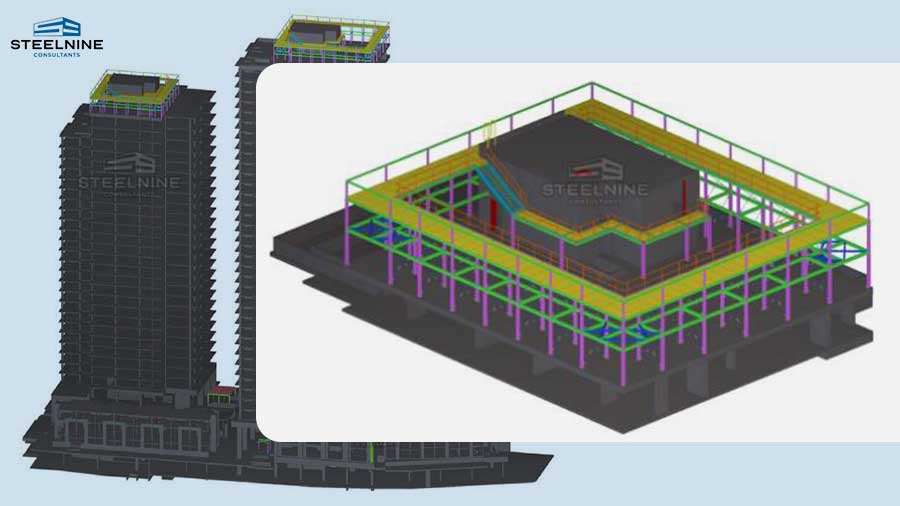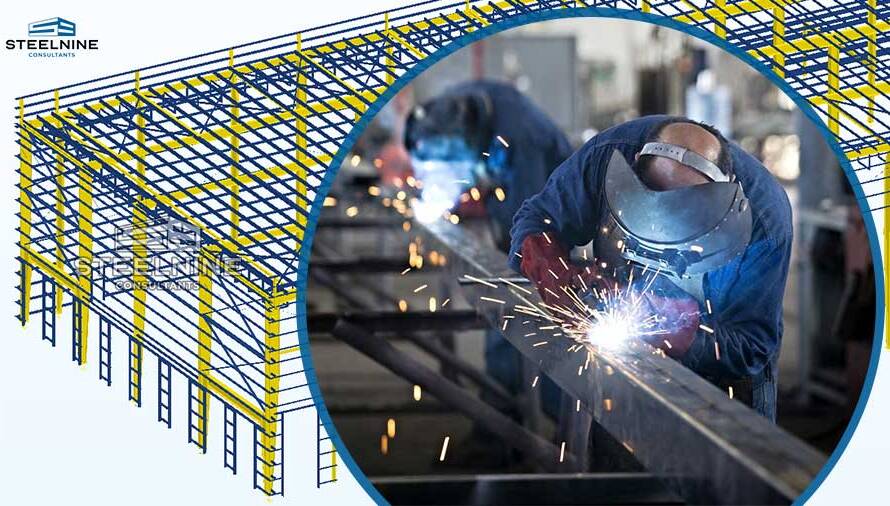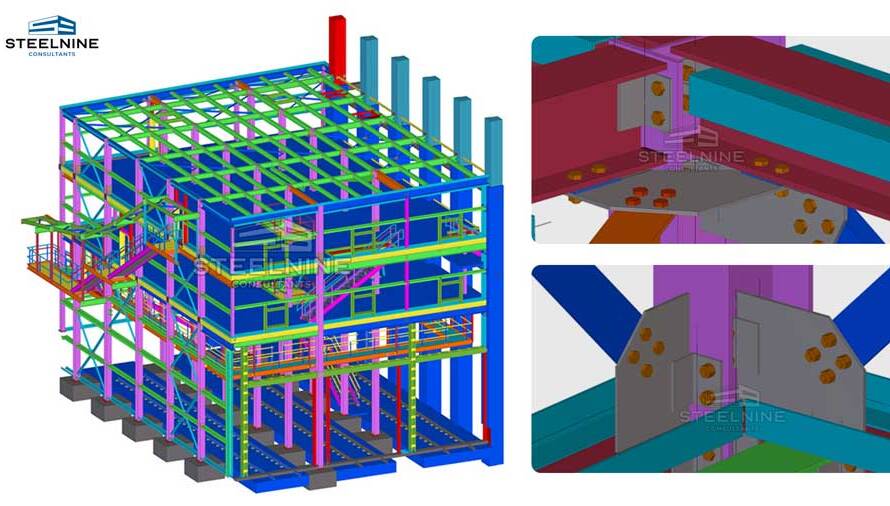Steel detailing is often considered the backbone of a construction project. It’s the process that transforms an architect’s vision and an engineer’s design into the reality of a structure. Without it, a construction project would be like trying to assemble a complex puzzle without the picture on the box.
Steel detailing involves specialized offerings provided by expert detailers or firms that focus on creating detailed steel fabrication and erection drawings. In construction, steel detailing services are critical for ensuring that all structural steel elements are meticulously planned and documented before the actual construction begins. By outsourcing to professionals, construction companies can benefit from precise drawings, optimized material usage, and a significant reduction in the risk of on-site errors. These services often utilize advanced software and 3D modeling techniques to produce highly accurate and detailed plans that align with the project’s specific requirements.
Why Steel Detailing is important for Construction Projects?
Reducing Errors and Rework
Steel detailing minimizes errors by providing clear and accurate instructions. When the drawings are correct, fabricators produce components that fit perfectly. This accuracy reduces the need for rework, saving time and money on the project.
Improving Efficiency
With detailed drawings in hand, the construction team can work more efficiently. They know exactly where each piece of steel goes, which speeds up the construction process. This efficiency helps keep the project on schedule and can even shorten the overall timeline.
Ensuring Structural Integrity
The safety and stability of a structure depend on the accuracy of its steel framework. Steel detailing ensures that each component is properly designed and placed, which is critical for the structural integrity of the building or bridge.
Cost Control
Mistakes in construction can be costly. Steel detailing helps control costs by reducing errors and ensuring that materials are used efficiently. By getting things right the first time, the project avoids unnecessary expenses, staying within budget.
Enhancing Communication
Steel detailers act as a vital link between the design and construction phases. Their drawings serve as a common language that architects, engineers, and construction workers can all understand. This improved communication helps prevent misunderstandings and keeps the project running smoothly.
Meeting Regulations and Standards
Every construction project must meet certain industry standards and regulations. Steel detailing ensures that the steel framework complies with these requirements. This compliance is essential for passing inspections and receiving final approvals.
Quality Assurance
Quality is a critical factor in any construction project. Steel detailing helps maintain high standards by specifying the correct materials and construction methods. This attention to detail ensures that the final structure is both strong and durable.
Facilitating Complex Designs
Modern construction projects often involve complex designs with intricate steel frameworks. Steel detailing enables these complex structures to be built by breaking down the design into manageable, detailed components. This level of detail allows even the most complex projects to be executed with precision.
Minimizing On-Site Modifications
On-site modifications can lead to significant delays and increased costs. Steel detailing ensures that everything is planned and fabricated according to the exact specifications, reducing the need for modifications during construction. This results in a smoother and faster construction process.
Optimizing Material Usage
Steel detailing helps in optimizing the usage of materials by accurately calculating the amount of steel required. This optimization not only reduces waste but also contributes to cost savings and sustainability in the construction process.
Supporting BIM Integration
Steel detailing is increasingly integrated with Building Information Modeling (BIM). This integration allows for better coordination between different trades and improves the overall planning and execution of the project. BIM integration also facilitates clash detection, ensuring that all components fit together seamlessly.
Conclusion
Investing in high-quality steel detailing is not just a good practice; it’s a fundamental step towards ensuring the overall success of any construction project. By reducing errors, improving efficiency, and ensuring structural integrity, steel detailing is essential for keeping projects on track and ensuring that the final structure is safe, stable, and built to last. In today’s complex construction environment, steel detailing is more important than ever for delivering successful projects on time and within budget.





